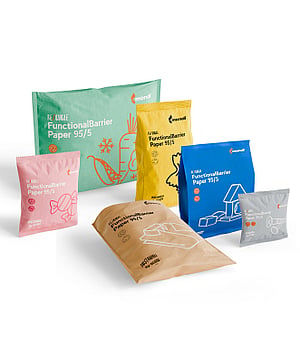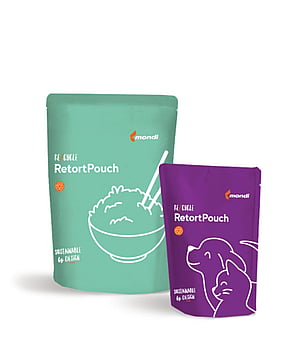Putting packaging at the heart of Europe’s circular economy
.jpg?stamp=23d59ce60e4b0d78485afefc224ce0f6c3e75442)
Europe has set its sights high: to lead the world in the circular economy, decarbonise its industries, and boost the continent’s strategic autonomy. It’s a bold vision, but one sector is already making quiet progress on all three fronts.
Packaging doesn’t always grab the spotlight, but it is part of the everyday infrastructure Europe relies on. It keeps trade moving, delivers food and medicine safely, and prevents waste by protecting goods in transit. At the same time, the industry has been driving innovation – delivering sustainable packaging solutions that meet customer needs while making measurable progress in decarbonising operations.
This makes packaging one of the sectors at the forefront of Europe’s circular transition. Across the continent, the industry has helped build one of the world’s most advanced markets for secondary raw materials, with paper and cardboard consistently leading the way on recycling rates. And when fresh materials are needed, Europe sets the benchmark too, with fibre sourced from forests managed to the highest sustainability standards, delivering wide-ranging benefits for climate, biodiversity and local communities.
But packaging’s continued progress is under pressure. Rising costs, fragmented regulation, and growing competition from countries with less stringent sustainability demands are standing in the way of the sector’s full potential. To stay on track, we need a shift in perspective.
Policymakers should not see packaging as a waste problem, but as a strategic industry that underpins the European economy, with a key role to play in accelerating the shift to a circular economy.”
- - Gladys Naylor, Group Head of Sustainable Development, Mondi
Packaging can go further. But pressure is building.
Packaging’s role in accelerating the circular transition is clear, but progress depends on getting the policy framework right. That means finding the point where circularity and competitiveness work in sync.
For one, sustainable packaging can take longer to produce and cost more upfront for brand owners. In today’s economic climate, those costs are hard for brands to absorb. If sustainable options are going to scale, they need to become the easiest and most cost-effective choice. Managing the price of materials and energy will be essential.
Fibre presents a different challenge. As the EU introduces policies to accelerate the transition away from a fossil-based economy, demand for fibre-based products will continue to rise. At the same time other policies may restrict access to responsibly sourced fibre, whether by reducing access to sustainably managed forests or stimulating demand in areas like biofuels. This would result in continued tightening supply, increasing costs and creating uncertainty across the packaging sector. If Europe wants to build a strong bioeconomy, it needs a joined-up approach that protects forests while securing the fibre needed to support the transition.
Plastic recycling faces its own pressures. Europe has built a valuable market for recycled plastics, but it is now being undercut by cheap imports from outside the EU. These often fall short of Europe’s environmental and social standards, placing local recyclers at a disadvantage. Stronger safeguards are needed to level the playing field for European producers and maintain confidence for long-term investment.
And even where the right policies exist, they are not always applied as intended. Take Extended Producer Responsibility as an example. It is a system based on the clear principle that producers should take responsibility for packaging waste, and the fees they pay should support better collection and recycling systems. Yet, when those payments are absorbed into general state budgets, it breaks the link between what companies contribute and the improvements needed to keep packaging materials in circulation.
From pressure to progress
Europe has the tools and the vision to overcome these pressures, and the upcoming Circular Economy Act is a chance to put them to work. As the EU Commissioner for Environment, Water Resilience and a Competitive Circular Economy, Jessika Roswall, has made clear, the goal must be "to put the Union’s environmental footprint on a sustained downward path while strengthening competitiveness and fostering open strategic autonomy." For packaging, that means turning policy alignment into real-world momentum.
The first step is to recognise the packaging industry as a strategic sector. It plays a central role in the circular economy and supports wider goals on trade, climate and industrial resilience. That role should be reflected across Europe’s policy frameworks, from the Clean Industrial Deal to the bioeconomy strategy.
Policymakers must also ensure continued access to sustainable raw materials for packaging. Europe’s forests are already managed to world-leading standards, but a more coherent approach across forestry, climate and circular economy legislation is needed to protect them, while securing the fibre supply that a thriving bioeconomy depends on.
Explore how Mondi transforms policy alignment into real-world momentum
Fair competition is just as important. European producers are already held to high environmental and social standards. Everything placed on the EU market, whether made here or imported, should meet those same expectations.
Finally, Extended Producer Responsibility must live up to its name. When producers pay into the system, those funds should contribute to improving collection, sorting and recycling. Circularity will scale, not through declarations, but through infrastructure, investment and delivery.
Scaling circularity together
If there’s one thing the industry knows better than anything, it’s the value of collaboration. Progress is rarely achieved in isolation; it comes from shared knowledge, long-term partnerships, and innovation built together. As a global leader in sustainable packaging and paper, Mondi works closely with customers to choose the best packaging for each application, whether paper, plastic or composites, always with the goal of keeping materials in play, lowering environmental footprints, and making sustainability part of everyday business.
That same spirit of collaboration is just as important between industry and policymakers. Building on Europe’s leadership in sustainability and circularity means recognising trade-offs, anticipating unintended consequences, and providing targeted support to scale the solutions that are already working.
Progress with brand owners comes through dialogue and understanding – and so too do the policy initiatives which enable packaging to thrive in the circular economy."
- - Fabio Peyer, Growth & Sustainability Director, Mondi Flexible Packaging
Ongoing efforts to implement the Packaging and Packaging Waste Regulation (PPWR) are a step in the right direction, with policy experts drawing on the input of industry experts to shape how the EU’s circularity goals can be executed practically and effectively. Taking that mindset into forestry, recycling infrastructure, and energy would ensure packaging reaches its full potential as a strategic sector.
Done right, packaging can continue to demonstrate that sustainability and competitiveness go hand in hand. For Europe, it is an opportunity not just to regulate packaging, but to showcase it as tangible proof that a circular economy can thrive when industry, consumer demand, brand owner ambition, manufacturing innovation and smart policymaking move in partnership with one another.
Packaging and Packaging Waste Regulation
Finding a customised packaging solution that meets the Packaging and Packaging Waste Regulation (PPWR) requirements with Mondi.




